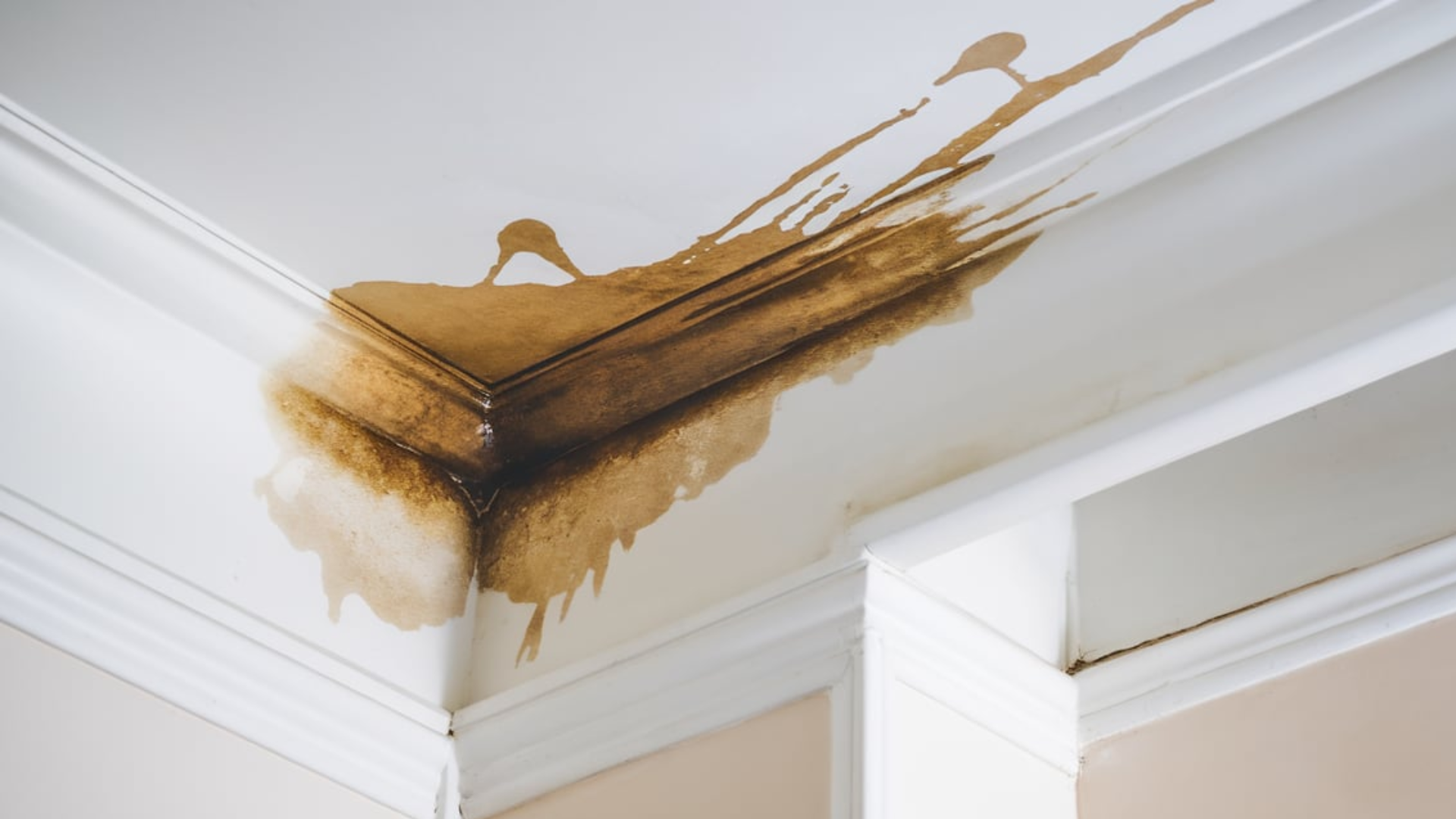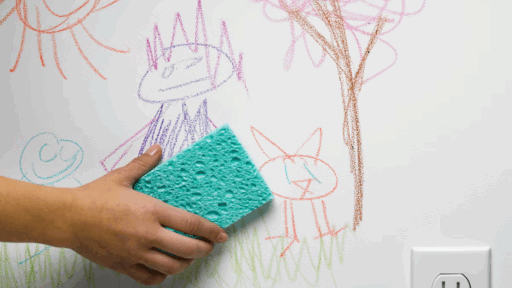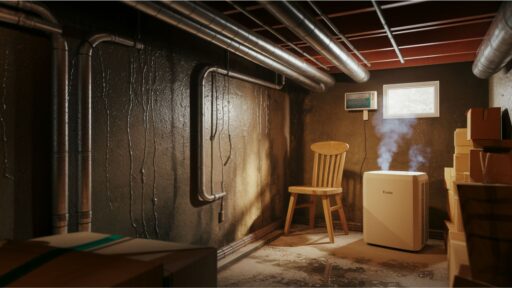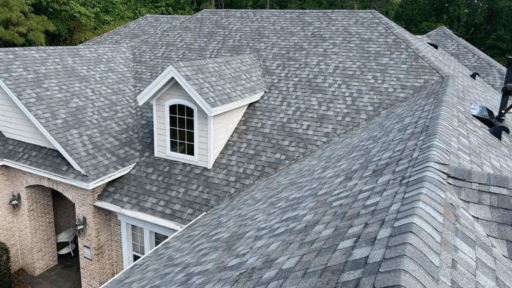Have you ever looked up and noticed a strange stain or crack on your ceiling? It might not seem like a big deal, but it could be an early sign of water damage.
Catching it early can save you a lot of time, money, and stress later. Water damage can sneak up on you, slowly spreading behind walls and ceilings until it becomes a major problem.
In this guide, I’ll show you the warning signs I usually watch for – like stains, peeling paint, or musty smells – so you can take care of issues before they turn into bigger problems.
You’ll also learn what causes water damage and how to prevent it in the future. This stuff is pretty straightforward, even if you’re not into home projects.
The idea is to help you keep your place dry and in good shape, just by checking out your ceiling now and then.
Why Spotting Water Damage Early Matters
Noticing water damage early can save your home from bigger problems. A small stain or damp spot on the ceiling might not seem serious, but it can be the first clue of a leak.
If left alone, that little mark can turn into mold, ceiling cracks, or even major structural damage.
Water can also weaken your ceiling materials and spread into your walls or floors.
Fixing a small leak is much easier and cheaper than dealing with a collapsed ceiling or a full-blown mold issue.
That’s why it’s important to know what to look for and act quickly. Whether it’s a tiny drip from the roof or a hidden pipe issue, catching the damage early helps keep your home safe and strong.
Learning the warning signs gives you the power to stop problems before they grow. It’s all about being one step ahead and protecting the place you call home.
What Causes Water Damage on Your Ceiling?

Water damage on the ceiling doesn’t just show up out of nowhere. In my experience, it usually means something else in the house isn’t right. I’ve found that a few common problems often lead to leaks and stains.
- Leaky roof or missing shingles: Rainwater can get in through cracks or holes in the roof.
- Burst or broken pipes: Pipes behind walls or in the ceiling can break and leak water slowly or all at once.
- Overflowing sinks or toilets upstairs: Water from bathrooms or kitchens above can drip down and damage the ceiling below.
- Faulty air conditioning (HVAC): When an air conditioner leaks or makes too much moisture, that water needs to go somewhere.
- Clogged gutters or poor drainage: If water can’t flow away from your home properly, it may sneak inside and cause damage.
Knowing these causes helps you stop water damage before it gets worse.
Early Signs of Water Damage on the Ceiling to Look For
Ceiling problems often start small but can lead to big damage. Knowing what to watch for helps you catch leaks early. I’ve learned to look out for changes in color, shape, or smell – these signs can tell you if water is getting in.
1. Discoloration and Stains
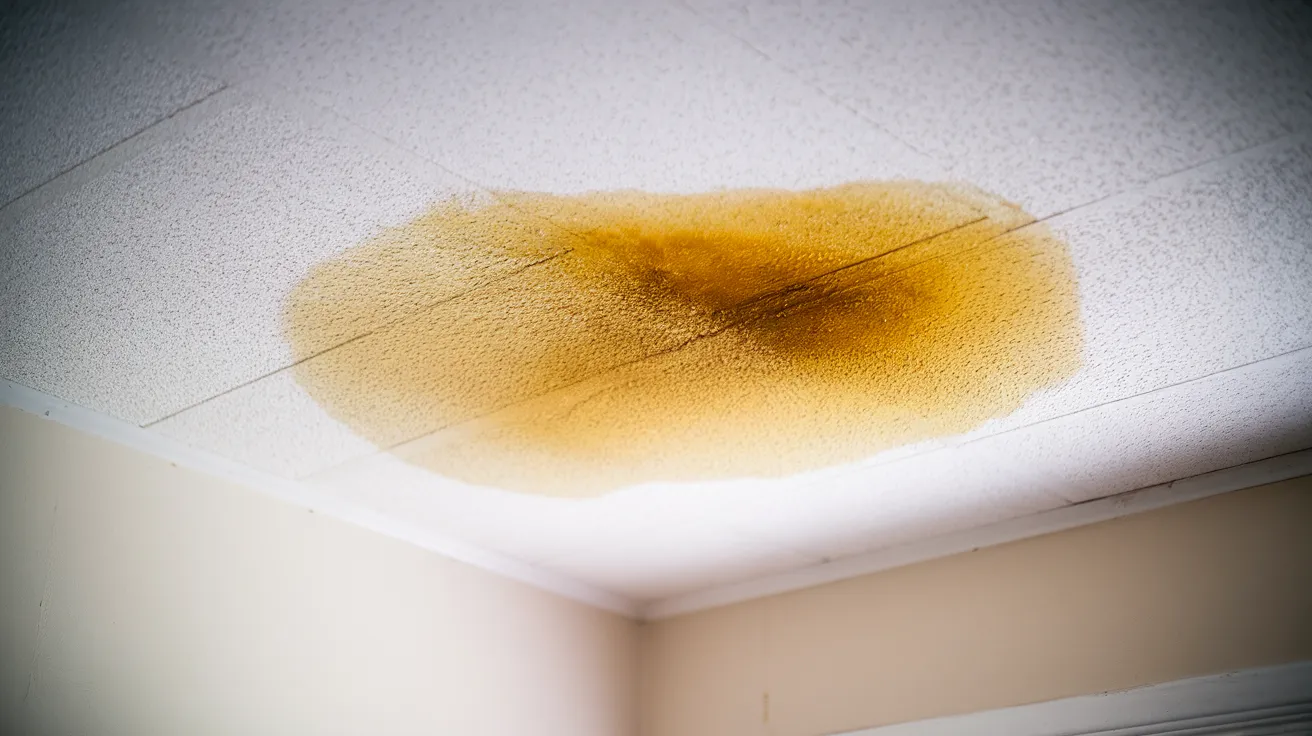
One of the first signs of water damage is a change in the color of your ceiling. You might see yellow, brown, or even copper-colored spots.
These stains often look like rings or blotches that slowly spread or get darker over time. They can appear anywhere, but are often near corners or below bathrooms.
If you notice a new stain, it’s a good idea to keep an eye on it. If it grows or changes color, there may be a leak above it. Catching stains early can help you fix the problem before it gets worse.
2. Bubbling or Peeling Paint
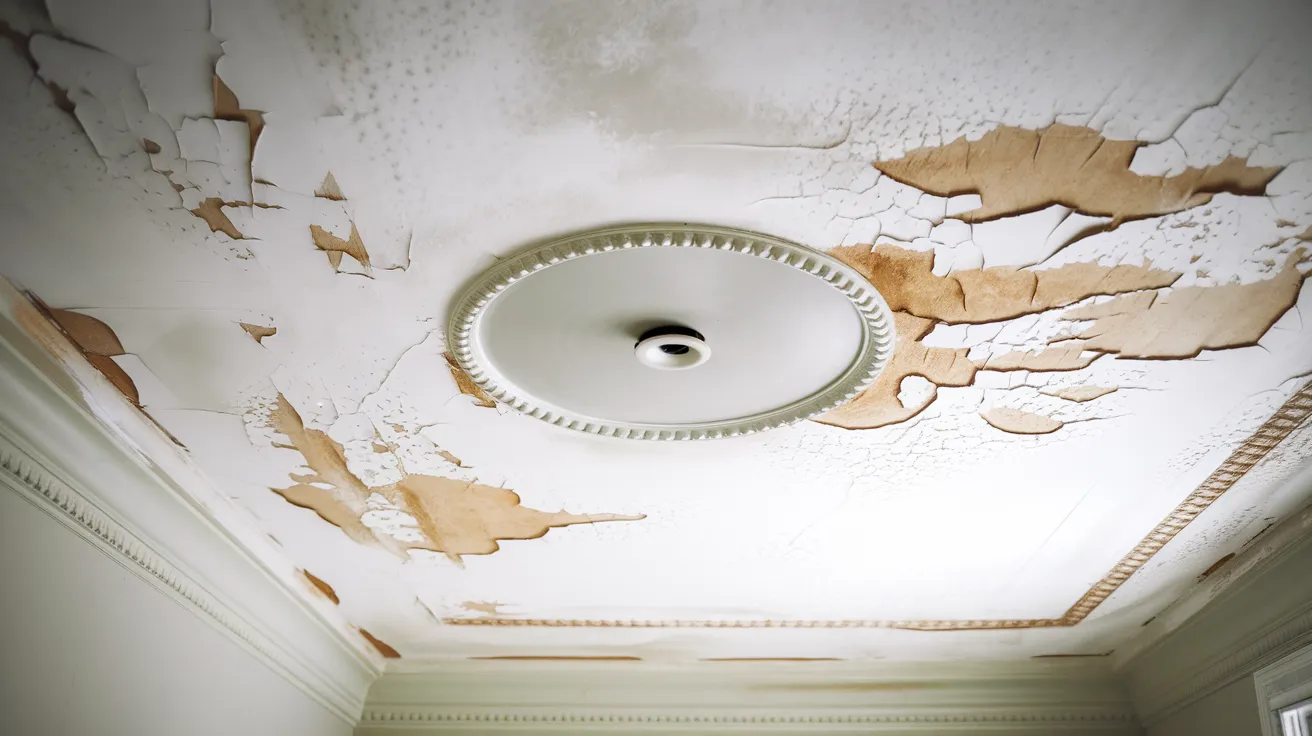
If you see bubbles under the paint or flakes falling off your ceiling, it could be a sign of water damage. Water behind the paint can cause it to lift and peel away.
This often happens near light fixtures, windows, or in corners of the ceiling. Sometimes the paint will even feel soft or spongy.
Peeling paint is not just a small problem- it could mean there’s a leak behind your walls or ceiling. Acting quickly can help prevent more damage and keep your ceiling looking nice.
3. Sagging or Warped Ceiling
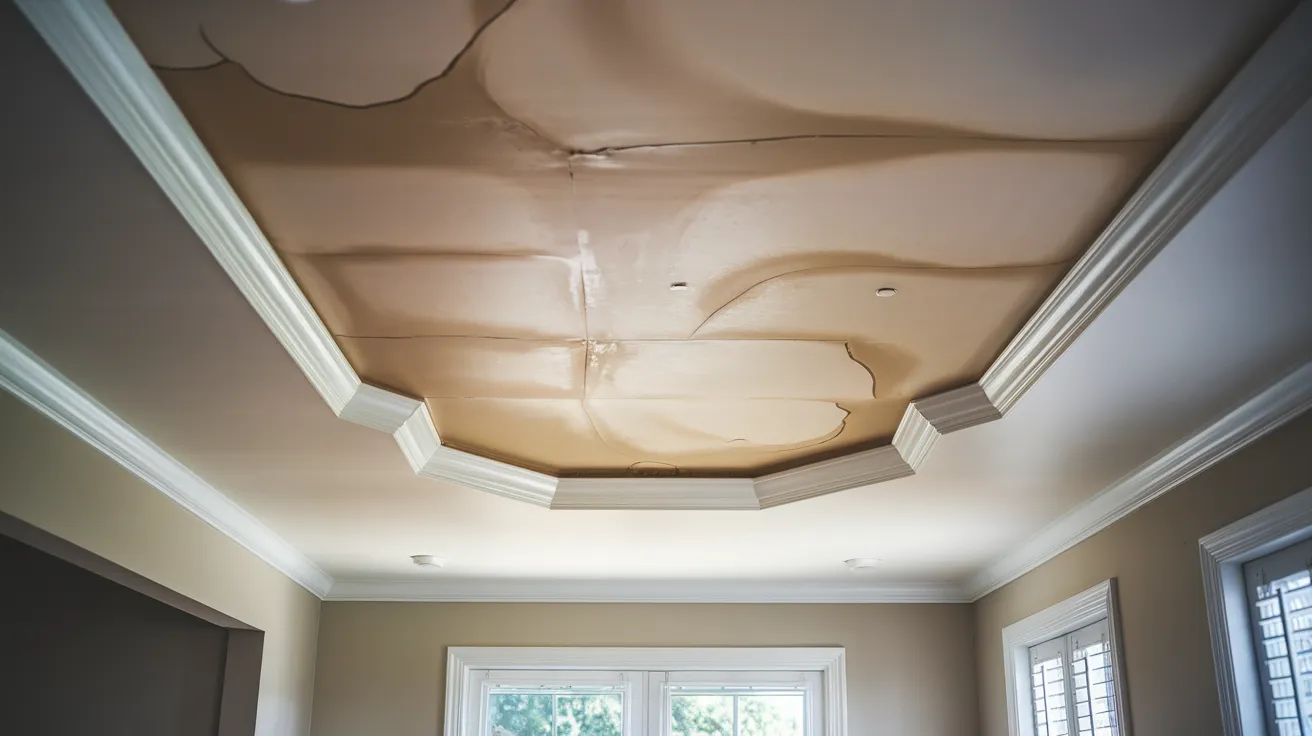
A sagging or drooping spot on your ceiling is a big warning sign. It means water has been building up above the surface.
The ceiling may bulge downward or feel soft when you touch it. If the problem is bad, the area might even crack or break.
This kind of damage needs attention right away because the ceiling could fall in and cause a bigger mess.
If you see any sagging or feel a spongy spot, call a professional to check it out and fix the source of the water.
4. Musty or Damp Smell

A musty or damp smell is another indication that water may be hidden in your ceiling.
This smell often shows up in rooms like bathrooms or basements, where humidity is high. The odor might be strongest in the morning or after a rainstorm.
Even if you don’t see any damage yet, the smell can mean mold is starting to grow behind the ceiling.
If your home smells like a wet towel or a basement, it’s time to investigate. Finding the source of the smell early can stop bigger problems later.
5. Mold or Mildew Spots

Tiny black or green spots on your ceiling could be mold or mildew. These often show up near water stains or damp areas.
Mold can spread quickly, especially in humid places like bathrooms. It may start small, but if left alone, it can grow and even damage your ceiling.
Mold can also make the air in your home unhealthy. If you see spots that look fuzzy, dark, or like tiny specks, don’t ignore them.
Cleaning up mold quickly and fixing the water problem behind it will help keep your home safe and clean.
What to Do If You Notice Signs of Water Damage on the Ceiling
Finding water damage on your ceiling can be stressful, but acting fast can stop it from getting worse. Here’s what to do.
- Find and stop the water source: Look for where the water is coming from. It could be a roof leak, a broken pipe, or an upstairs bathroom. Turn off the water if needed or cover the leak temporarily.
- Take photos of the damage: Use your phone to snap pictures of any stains, cracks, or mold. This will help if you need to file an insurance claim.
- Call a professional: If the problem is big or you’re not sure what to do, call a roofer, plumber, or water damage expert to help.
- Dry the area well: Use fans, towels, or a dehumidifier to remove moisture. Drying the spot quickly can help stop mold and further damage.
Preventing Future Water Damage
- Look around your home often: Check your roof, attic, and pipes every few months. Spotting small problems early can stop bigger damage later.
- Keep gutters and drains clear: Clean out leaves and dirt from your gutters. Make sure downspouts are pointed away from your home so water flows out, not in.
- Use a dehumidifier in damp spots: If you have a basement or a room that feels wet or musty, a dehumidifier can help pull extra moisture from the air.
- Seal up trouble spots: Look at areas around skylights, chimneys, and roof vents. If the seals are cracked or loose, water can sneak in. Reseal them to stay safe.
Conclusion
I know how easy it is to miss the early signs of water damage on the ceiling. Life gets busy, and a small stain or musty smell might not seem like a big deal.
But catching these signs early can save a lot of money and stress later. If I see a brown spot, bubbling paint, or a soft area on the ceiling, I don’t ignore it check it right away.
Taking quick steps, like stopping the water source and drying the area, makes a big difference. I also try to keep my home safe by checking my roof, pipes, and gutters regularly.
It doesn’t take long and gives peace of mind. If you’re noticing anything odd on your ceiling, trust your gut and take action. You’ll protect your home and avoid bigger problems down the road.
A little care today keeps things safer tomorrow.


